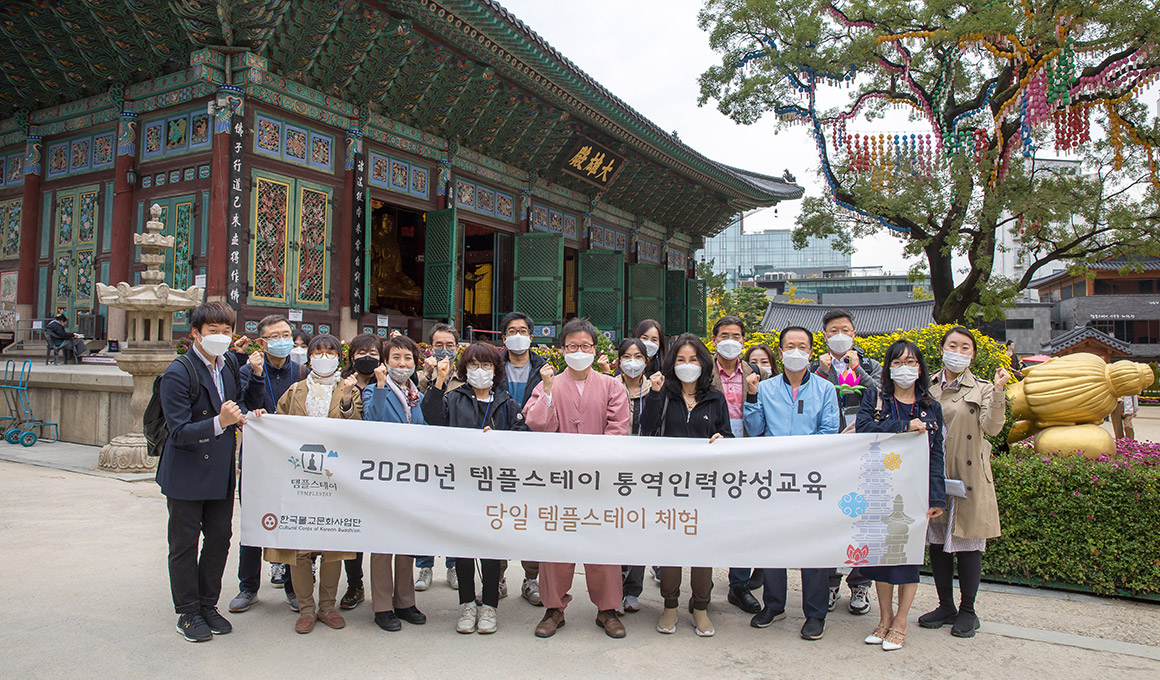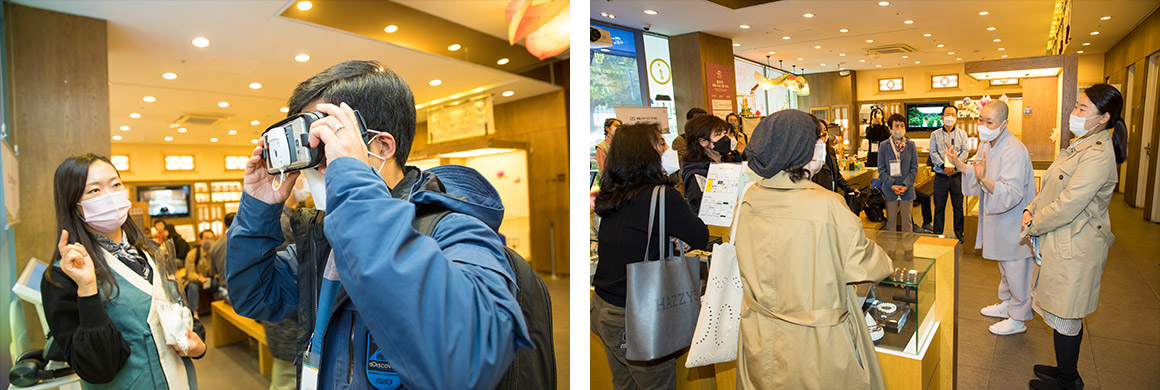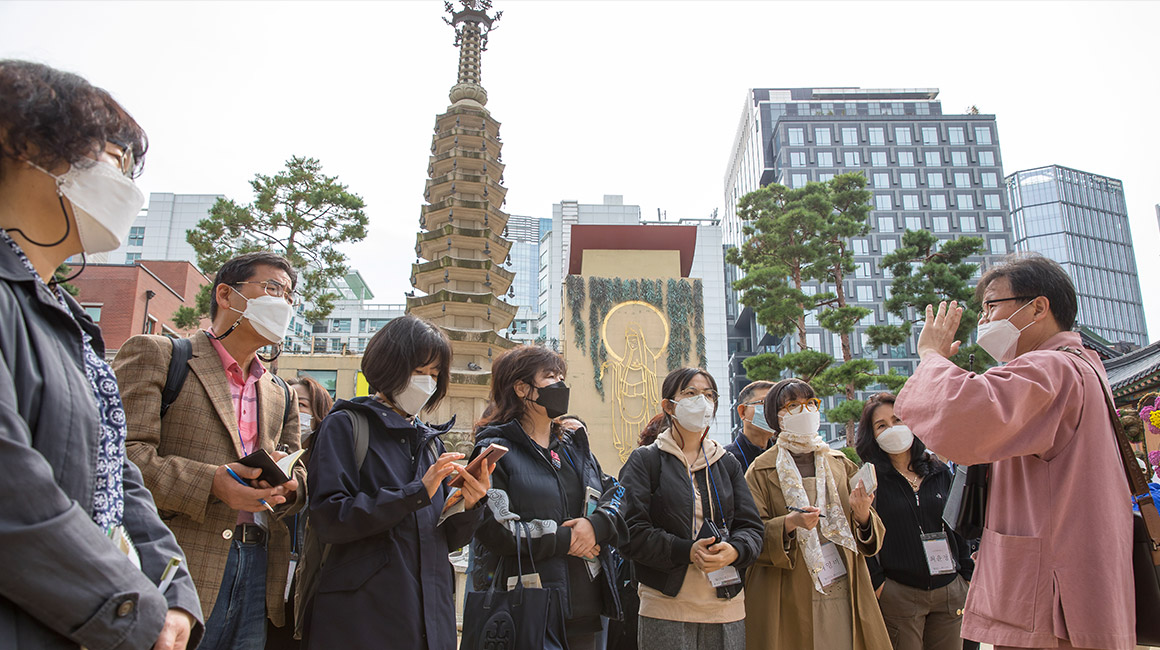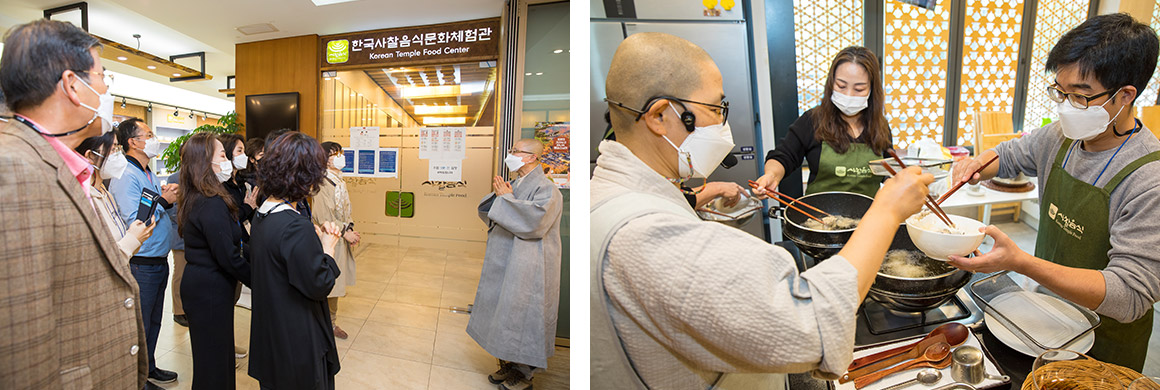Korean Buddhist Culture, Its Vivid Presentation to Foreigners
Tour Guides/Interpreters Receive Hands-On Training in Korean Buddhist Culture

In terms of being “transmitters of culture,” beyond the simple job of target language translation, the job of translators is critical. The Cultural Corps of Korean Buddhism recently conducted on-site training for tour guides/interpreters working for the Korea Tourist Guide Association in order to improve their understanding of Korean monastic culture.
All in all, four training sessions were conducted between Oct 13 and 20 at four temples in Seoul (Jinkwansa, Geumsunsa, Hwagyesa and Jogyesa), as well as at the Templestay Information Center and the Korean Temple Food Culture Experience Center
Each temple provided hands-on training to boost the participants’ understanding of Korean monastic culture and educated them on the Templestay program and temple food. Here’s a brief report on the training conducted on Oct. 16 at the Templestay Information Center, Jogyesa Temple, and the Korean Temple Food Culture Experience Center.

First, participants had an indirect Templestay experience through virtual reality videos at the Templestay Information Center (hereafter Information Center). They were also introduced to various traditional cultural experience programs provided by the Information Center, including typical Templestay activities like conversation over tea with a monk and making lotus lanterns. Ven. Deunggwang, the nun in charge of traditional Buddhist culture program at the Information Center, said, “Our experiential programs are highly popular with foreigners. You too can enjoy our programs by experiencing them.” Next, participants visited the Korean Temple Food Center on the 2nd floor of the Information Center building. They expressed their interest and asked questions about programs and fees for foreigners.

Next, they moved on to Jogyesa across the street, where Mok Gyeong-chan, former professor of Korea National Open University and an expert on monastic culture, taught. Jogyesa was the first temple to be established in 1910 within the perimeter of the four major gates of Seoul. Beginning from the temple’s One Pillar Gate, which doubles as the Gate of Four Heavenly Kings, participants learned the meaning of each Buddhist structure and Buddhist icons. Korea’s native folk religion, now embodied in depictions of Sakyamuni Buddha, Avalokitesvara Bodhisattva, Amitabha Buddha and Ksitigarbha Bodhisattva, especially resonated with participants. They really enjoyed hearing witty, modernized explanations like, “Buddhas and Bodhisattvas are the GPS of our lives.” Kim Sang-u, a Chinese translator/guide, expressed his feelings, saying, “This has been a good opportunity to learn things I never knew. I enjoyed the figurative explanations, easy to understand for people of our time. I think this way of explanation will heighten the satisfaction of foreign tourists.”

The last training of the day was given at the Korean Temple Food Culture Experience Center (hereafter Experience Center) in Insa-dong. Ven. Yeoil, who operates the Experience Center, explained that Korean temple food embodies the hope of monastics that all people remain healthy and happy by eating food made from seasonal ingredients provided by nature. Next, Ven. Yuhwa led the actual cooking practice to make temple food. Divided into groups, the participants made two dishes: “stir-fried glass noodles with burdock” (in which the texture of the burdock creates a distinctive harmony with the noodles) and “sweet crispy fried shiitake mushrooms” (in which the texture of the perilla seeds harmonizes with the mushrooms). Participants were awed at the novelty of temple food which uses only veggie ingredients based on Buddhism’s respect for life, and which also doesn’t use pungent seasonings that can interfere with one’s Buddhist practice.
Kim Chan-hong, an English translator/guide, shared his feelings, saying, “Korean food is getting ever more popular all over the world. I prepared myself for today’s training by participating in a Templestay at Jogyesa yesterday. The ‘new sprouts bibimbap’ I had for breakfast will be well received by foreigners, I think. It’s amazing to be able to create this marvelous taste just from vegetables. Temple food s a genuine health food and healing food. I will cook the temple food dishes I learned today for my family.”
By providing real hands-on experience, the training for translators/guides ended with an enthusiastic response from the participants.





